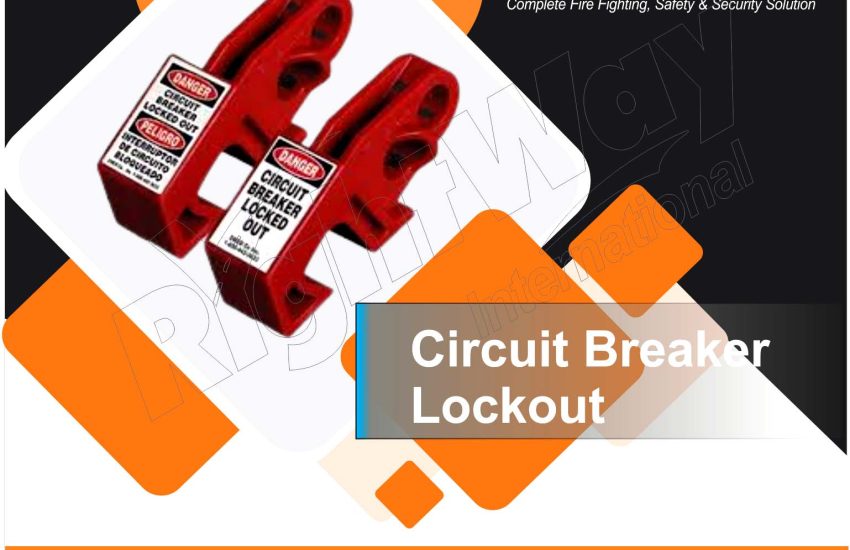Circuit breaker lockouts are vital safety devices used to ensure the safe maintenance and servicing of electrical systems. By preventing unauthorized or accidental reactivation of circuit breakers, these lockouts protect workers from electrical hazards and ensure compliance with safety regulations. This article explores the purpose, types, benefits, and applications of circuit breaker lockout, highlighting their importance in maintaining a safe working environment.
Purpose of Circuit Breaker Lockouts
- Preventing Accidental Energization: Circuit breaker lockout are designed to secure circuit breakers in the off position, preventing them from being accidentally or unintentionally turned back on during maintenance or repair work.
- Enhancing Worker Safety: By ensuring that electrical circuits cannot be reactivated without proper authorization, circuit breaker lockout protect workers from the risk of electrical shock and other hazards associated with live electrical systems.
- Regulatory Compliance: Circuit breaker lockous help organizations comply with safety regulations, such as those set by OSHA and other regulatory bodies, which mandate proper lockout/tagout procedures to protect workers during electrical maintenance.
- Controlling Access: These lockouts help control who has the authority to turn on or off electrical circuits, ensuring that only authorized personnel can make changes to the system.
Types of Circuit Breaker Lockouts
- Standard Circuit Breaker Lockouts: These are basic devices designed to fit most standard circuit breakers. They typically cover the switch and can be secured with a padlock, preventing unauthorized operation.
- Universal Circuit Breaker Lockouts: Designed to fit a wide range of circuit breaker styles and sizes, universal lockouts offer flexibility and are suitable for various electrical systems and applications.
- Breaker Lockout with Hasps: This type of lockout incorporates a hasp mechanism, allowing multiple padlocks to be used simultaneously. It is useful when multiple workers need to secure a circuit breaker during maintenance.
- Clamp-On Circuit Breaker Lockouts: These lockout clamp directly onto the circuit breaker, providing a secure fit and preventing the breaker from being turned on or off. They are often used in industrial settings where durability is required.
- Rotary Circuit Breaker Lockouts: Designed for rotary-style circuit breakers, these lockout fit over the rotary switch and can be locked in place, ensuring that the circuit cannot be reactivated while work is being performed.
Benefits of Circuit Breaker Lockouts
- Increased Safety: Circuit breaker lockout significantly reduce the risk of electrical accidents by ensuring that circuit breakers cannot be accidentally or unauthorized reactivated while maintenance is in progress.
- Regulatory Compliance: Using circuit breaker lockout helps organizations adhere to safety standards and regulations, such as those required by OSHA, ensuring that lockout/tagout procedures are correctly followed.
- Enhanced Control: These lockouts allow for better control over electrical systems, ensuring that only authorized personnel can operate circuit breakers and minimizing the risk of accidental energization.
- Durability and Reliability: High-quality circuit breaker lockout are designed to be durable and reliable, with materials and construction that withstand harsh environments and repeated use.
- Ease of Installation: Circuit breaker lockout are generally easy to install and use, making them a practical solution for securing electrical circuits during maintenance or repair activities.
Applications of Circuit Breaker Lockouts
- Industrial Facilities: In industrial settings, circuit breaker lockout are used to secure electrical panels and prevent accidental reactivation of circuit breakers during maintenance or repair work.
- Commercial Buildings: Circuit breaker lockout are essential in commercial buildings to ensure that electrical systems are safely managed during maintenance and to comply with safety regulations.
- Manufacturing Plants: In manufacturing environments, circuit breaker lockout protect workers by securing electrical systems and preventing unexpected energization of machinery.
- Power Plants: Circuit breaker lockout are critical in power plants to ensure the safe maintenance of electrical systems and to prevent unauthorized or accidental activation of circuit breakers.
- Public Utilities: For public utility companies, circuit breaker lockout are used to secure electrical infrastructure and ensure that maintenance work is conducted safely and in compliance with regulatory requirements.
Conclusion
Circuit breaker lockout are essential tools for ensuring electrical safety and compliance with lockout/tagout procedures. By understanding the different types and benefits of circuit breaker lockout, organizations can better protect their workers and maintain a safe working environment. Whether in industrial, commercial, or utility settings, circuit breaker lockout play a crucial role in preventing electrical accidents, controlling access to electrical systems, and adhering to safety regulations.


